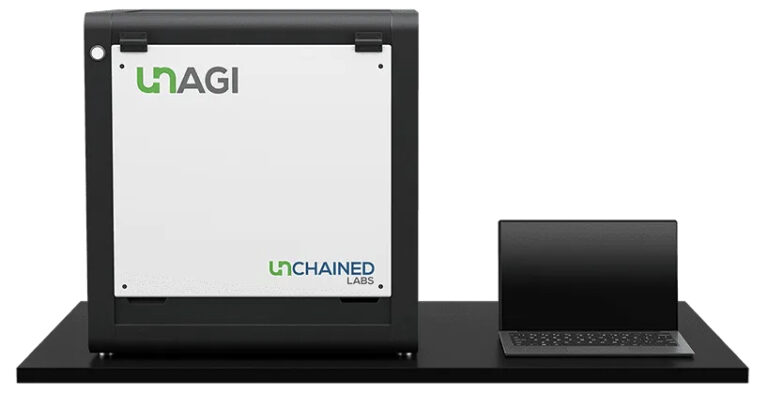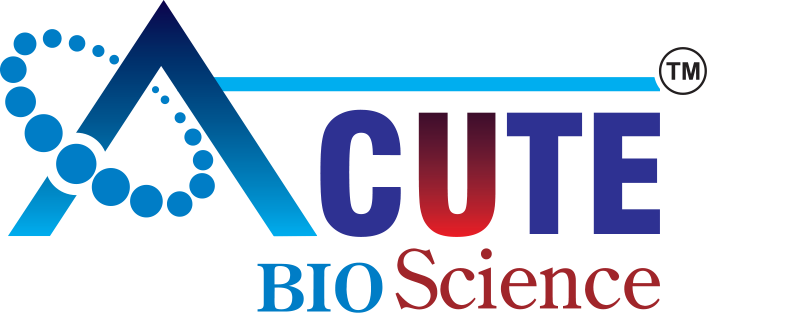Unagi

- Capabilities
- Specifications
- Bite-sized buffer exchange
- Buffer exchange and concentration are two of the most annoying things you have to do before you can work with your sample.
- It takes forever, you physically have to be there and just when you think it’s done, you’re tweaking it again.
- Unagi is the first completely hands-free benchtop buffer exchange solution that’s made to take this not-so-fun task off your plate — so you can be anywhere else instead of tied to your bench.
- Protein
- mRNA & DNA
- AAV
- LNP
- Served up a’ la carte
Drop 1 to 8 of your samples into some Unas, twist them into the holder and boom, they’re ready to go. Each Una can handle from 0.5 to 8 mL of sample. They have regenerated cellulose (10, 30, and 100 kDa MWCOs) and polyethersulfone (30 and 100 kDa MWCOs) to make sure your samples stay put, don’t get absorbed, and the liquid passes right through — with ≥96% recovery.
- The secret sauce
Unagi has the recipe for UF/DF buffer exchange dialed in. It checks the initial sample volumes with an ultrasonic sensor so it knows what it’s working with. Next, it pressurizes each Una while gently mixing your samples to get things flowing. It checks the volume again and refills each Una with your new buffer. This process repeats until Unagi hits your target exchange percentage and volume.
- Put in your order
Unagi is super easy to use — so everyone can get a taste. First choose the type of experiment you want to run. Then tell it what kind of molecule you’re exchanging, how much you have, and what buffer to exchange into. Last step is to input percent exchange and final volume if you want to concentrate your sample.
- Get your fill
Now you just follow Unagi’s step-by-step instructions. Load up the tray of Unas filled with your samples in the front. Fill Falcon tubes with your buffers and plop them in on the left. Throw some tip racks in on the right and Unagi is ready to go. No joke, it’s that easy.
- Let it roll
Hit start and let Unagi do its thing. Now you can walk away, but feel free to check on Unagi whenever you want. It’s tracking the number of exchange cycles completed, provides info on the current filtration cycle, and displays the percent exchanged for each sample. If you’re in a pinch, you can pause the run to take out samples that are done before the rest or keep it rolling. Either way, Unagi will tell you when it’s a wrap.
- Take it down
Some samples are too dilute and need a little TLC. Unagi can concentrate these samples to a usable range. Choose the Reduce Sample Volume application and Unagi will concentrate up to eight dilute samples from 48 mL down to 8 mL in a single run. From there, you can follow up with a buffer exchange run or concentrate them further.
- Get the check
Unagi tracks every single move it made and documents everything that happened during the run. It kicks out a detailed report of final volumes and concentrations, flow rates for every cycle, and the final percent exchanged for each sample. These reports can easily be placed in a lab notebook, uploaded to a LIMs, or hung on your refrigerator.
Application | |
| Buffer exchange volume range | 0.5-8 mL |
| Formulations | Up to 8 formulations in parallel |
| Sample types | Antibodies and other proteins, nucleic acids, and AAVs |
| Exchange time at full volume (96%, at 10 mg/mL IgG) | 4.5 hours* |
| Protein concentration (range) | Up to 200 mg/mL* |
| Target concentration accuracy | ±10%* |
| Sample recovery | ≥96%* |
System | |
| Volume measurement | Ultrasonic sensor |
| Exchange pressures | 15, 30 or 60 psi |
| Operating temperature | Room temperature |
| Buffer exchange orbital mixing | Optimized at 700 rpm Duty cycle programmable |
| Physical | 63 cm W x 57 cm D x 66 cm H; 65 kg |
| Electrical | Voltage 100-260 VAC, 50-60 Hz |
| Nitrogen or CDA requirement | Pressure 0.55–0.69 MPa (80–100 psi) Flow rate 0.25 L/s (0.5 cfm) minimum |
Consumables | |
| Una | 10, 30, and 100 kDa, regenerated cellulose 30 and 100 kDa polyethersulfone |
| Disposable tips | 1000 µL non-filtered, automatic re-use up to 12 times per exchange |
| Dispense precision | 0.3-8 mL: ≤1% |
Overview
The only completely hands-free benchtop buffer exchange solution
Capabilities
- Bite-sized buffer exchange
- Buffer exchange and concentration are two of the most annoying things you have to do before you can work with your sample.
- It takes forever, you physically have to be there and just when you think it’s done, you’re tweaking it again.
- Unagi is the first completely hands-free benchtop buffer exchange solution that’s made to take this not-so-fun task off your plate — so you can be anywhere else instead of tied to your bench.
- Protein
- mRNA & DNA
- AAV
- LNP
- Served up a’ la carte
Drop 1 to 8 of your samples into some Unas, twist them into the holder and boom, they’re ready to go. Each Una can handle from 0.5 to 8 mL of sample. They have regenerated cellulose (10, 30, and 100 kDa MWCOs) and polyethersulfone (30 and 100 kDa MWCOs) to make sure your samples stay put, don’t get absorbed, and the liquid passes right through — with ≥96% recovery.
- The secret sauce
Unagi has the recipe for UF/DF buffer exchange dialed in. It checks the initial sample volumes with an ultrasonic sensor so it knows what it’s working with. Next, it pressurizes each Una while gently mixing your samples to get things flowing. It checks the volume again and refills each Una with your new buffer. This process repeats until Unagi hits your target exchange percentage and volume.
- Put in your order
Unagi is super easy to use — so everyone can get a taste. First choose the type of experiment you want to run. Then tell it what kind of molecule you’re exchanging, how much you have, and what buffer to exchange into. Last step is to input percent exchange and final volume if you want to concentrate your sample.
- Get your fill
Now you just follow Unagi’s step-by-step instructions. Load up the tray of Unas filled with your samples in the front. Fill Falcon tubes with your buffers and plop them in on the left. Throw some tip racks in on the right and Unagi is ready to go. No joke, it’s that easy.
- Let it roll
Hit start and let Unagi do its thing. Now you can walk away, but feel free to check on Unagi whenever you want. It’s tracking the number of exchange cycles completed, provides info on the current filtration cycle, and displays the percent exchanged for each sample. If you’re in a pinch, you can pause the run to take out samples that are done before the rest or keep it rolling. Either way, Unagi will tell you when it’s a wrap.
- Take it down
Some samples are too dilute and need a little TLC. Unagi can concentrate these samples to a usable range. Choose the Reduce Sample Volume application and Unagi will concentrate up to eight dilute samples from 48 mL down to 8 mL in a single run. From there, you can follow up with a buffer exchange run or concentrate them further.
- Get the check
Unagi tracks every single move it made and documents everything that happened during the run. It kicks out a detailed report of final volumes and concentrations, flow rates for every cycle, and the final percent exchanged for each sample. These reports can easily be placed in a lab notebook, uploaded to a LIMs, or hung on your refrigerator.
Specifications
Application | |
| Buffer exchange volume range | 0.5-8 mL |
| Formulations | Up to 8 formulations in parallel |
| Sample types | Antibodies and other proteins, nucleic acids, and AAVs |
| Exchange time at full volume (96%, at 10 mg/mL IgG) | 4.5 hours* |
| Protein concentration (range) | Up to 200 mg/mL* |
| Target concentration accuracy | ±10%* |
| Sample recovery | ≥96%* |
System | |
| Volume measurement | Ultrasonic sensor |
| Exchange pressures | 15, 30 or 60 psi |
| Operating temperature | Room temperature |
| Buffer exchange orbital mixing | Optimized at 700 rpm Duty cycle programmable |
| Physical | 63 cm W x 57 cm D x 66 cm H; 65 kg |
| Electrical | Voltage 100-260 VAC, 50-60 Hz |
| Nitrogen or CDA requirement | Pressure 0.55–0.69 MPa (80–100 psi) Flow rate 0.25 L/s (0.5 cfm) minimum |
Consumables | |
| Una | 10, 30, and 100 kDa, regenerated cellulose 30 and 100 kDa polyethersulfone |
| Disposable tips | 1000 µL non-filtered, automatic re-use up to 12 times per exchange |
| Dispense precision | 0.3-8 mL: ≤1% |
